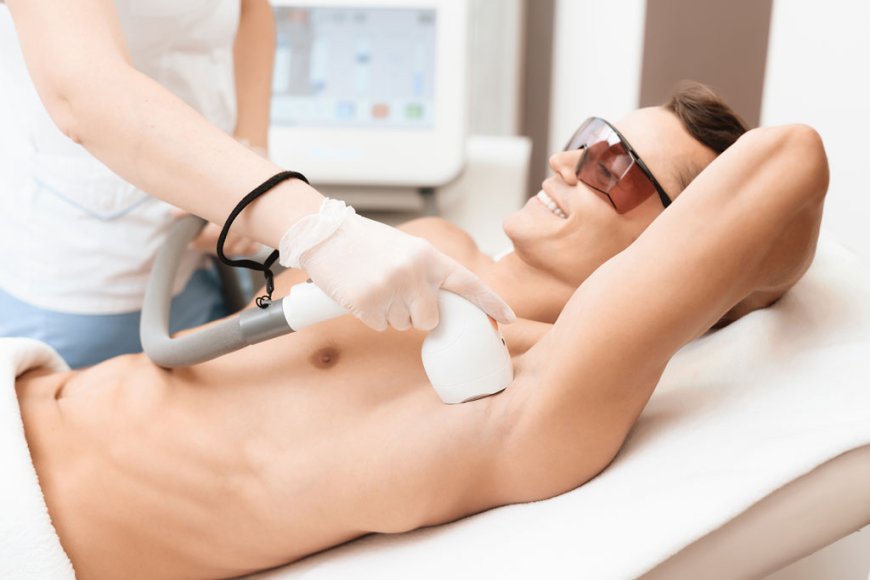Laser Hair Removal: What to Expect During Treatment
Ditch the razor! Explore laser hair removal in Dubai for long-lasting results. Find clinics, learn the benefits, and achieve silky-smooth skin.

Laser hair removal has gained significant popularity as an effective and long-lasting method for reducing unwanted body hair. Unlike traditional methods such as shaving, waxing, or plucking, laser hair removal targets hair follicles using concentrated light energy, leading to permanent hair reduction. If you’re considering this treatment, understanding what to expect during the procedure can help alleviate any apprehensions and ensure a smoother experience.
Understanding the Treatment Process
When you decide to undergo Laser Hair Removal in Dubai, the first step is a consultation with a trained professional. During this appointment, the practitioner will assess your hair and skin type, discuss your medical history, and explain how the treatment works. It's essential to communicate any skin sensitivities or previous treatments you have undergone. This will help the practitioner tailor the treatment to your specific needs, ensuring optimal results.
Preparing for Your Session
Prior to your treatment, there are a few preparations to keep in mind. Avoid sun exposure for at least four weeks before your session, as tanned skin can increase the risk of side effects. Additionally, refrain from waxing or plucking the hair in the targeted area for about six weeks prior to the procedure. Shaving is encouraged, as it allows the laser to focus on the hair follicle rather than the hair above the skin.
Your practitioner may also recommend avoiding certain medications or skin products that can increase sensitivity. These might include retinoids, topical acne treatments, or blood thinners. Following these guidelines can help ensure that your skin is in the best condition for laser hair removal.
What Happens During the Treatment
On the day of your treatment, you'll be asked to arrive with clean skin, free from lotions or deodorants. Most clinics provide protective eyewear to shield your eyes from the laser light. Depending on the size of the area being treated, your session can last anywhere from a few minutes to an hour.
During the procedure, the practitioner will use a handheld laser device to deliver concentrated light to the hair follicles. The laser emits a pulse of light that is absorbed by the pigment in the hair. This energy converts to heat, effectively damaging the hair follicle and inhibiting future hair growth. While the sensation is often compared to a rubber band snapping against the skin, many devices come equipped with cooling mechanisms to minimize discomfort.
Pain Management Options
The level of discomfort experienced during laser hair removal can vary from person to person, largely depending on individual pain tolerance and the area being treated. While some describe the sensation as mildly uncomfortable, others may find it more painful. Practitioners may offer topical anesthetics to numb the skin prior to treatment, which can enhance your comfort level. Additionally, the cooling devices built into many laser systems can significantly reduce any potential pain during the procedure.
After the Treatment
After your laser hair removal session, you may experience some temporary redness and swelling in the treated area, similar to a mild sunburn. This is a normal reaction and should subside within a few hours to a couple of days. To alleviate any discomfort, you can apply a soothing aloe vera gel or a cold compress to the area.
It’s crucial to follow post-treatment care instructions provided by your practitioner. These may include avoiding sun exposure, wearing sunscreen, and not engaging in activities that may irritate the skin, such as swimming in chlorinated water or using hot tubs for at least 48 hours.
Expected Results and Follow-Up Treatments
Results can vary based on individual factors such as hair color, skin type, and the area treated. Most individuals will notice a significant reduction in hair growth within a few weeks after the first session. However, multiple treatments are typically necessary to achieve optimal results, as hair grows in different cycles.
Your practitioner will schedule follow-up appointments, often spaced six to eight weeks apart, to ensure that all hair is effectively targeted during the growth phase. Typically, patients require anywhere from four to eight sessions for the best results.
Conclusion
Laser hair removal is a reliable and effective solution for those seeking long-term hair reduction. By understanding what to expect during the treatment process, you can approach your sessions with confidence. From the initial consultation and preparation to the treatment itself and the aftercare, being informed will help you make the most of your laser hair removal experience. If you're considering this treatment, consult with a licensed professional to discuss your options and any concerns you may have.
